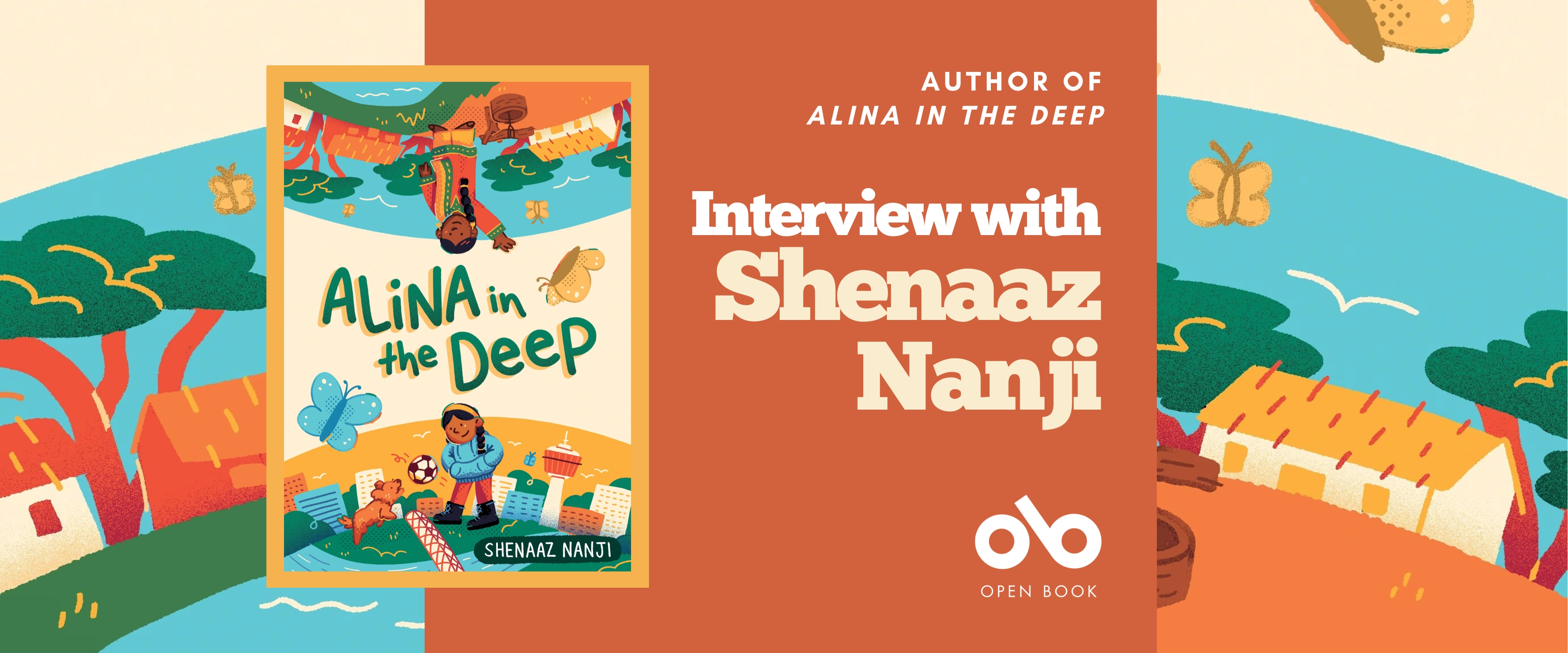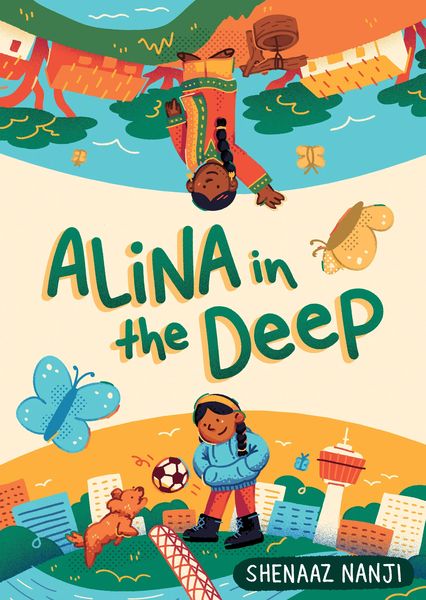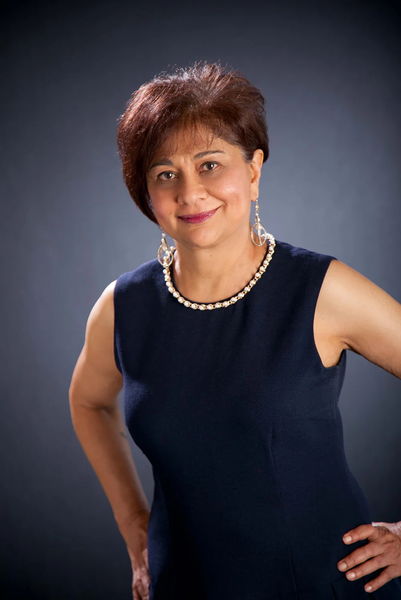Shenaaz Nanji's Latest Addition to the Alina Series Explores the Beauty in Connecting Different Cultures and Communities
With over a dozen books for children published and admired internationally, Shenaaz Nanji is an author who has found a distinct way to capture the minds of young readers with her imaginative and poignant stories. Readers who loved her award-nominated chapter book, Alina in a Pinch, will be thrilled at the recent release of the sequel in that series.
In Alina in the Deep (Second Story Press), we explore themes of friendship and uniqueness, joining the titular character as her cousin arrives from Kenya for the summer. It's a dream come true for Alina, as she's always wanted a sibling, but her hopes seemed to be dashed when the connection with her new would-be BFF proves elusive. Her cousin, Safi, wears her traditional clothing proudly, and her actions make them stand out, which Alina hates!
Will Alina find a way to bridge the gap with her cousin? And what will she learn along the way, about herself and the world.
This is a story of identity and belonging, and one that shows the importance of our differences and the fascinating ways the friendship and community can be built between characters who have their own distinct customs and culture.
Read this excellent Kid's Club BFYP interview with the author right here, and find out more about the importance of the themes in Alina in the Deep, and how this new addition to the series came to be.
Open Book:
Is there a message you hope kids might take away from reading your book?
Shenaaz G. Nanji:
Friendships are usually built on commonalities. Birds of a feather flock together, right? Yes, it’s easy to be friends with people who look like you and have the same interests and tastes. Alina in the Deep asks the readers—can you be friends with people who look and are different from you? Different race, culture, and nationality? Different personality?
In the story, Alina finds it hard to get along with her cousin who comes from a different country, is exposed to a different culture, and has a different personality. As the story unravels, Alina learns that friendship can transcend different cultures, different backgrounds, and geographical borders. Friends with different interests enrich and expand your worldview. You share silly good times, support one another, learn to handle blow ups and to compromise. Friends with opposite personalities help fill in the traits missing from yourself. You learn to love them despite the differences.
Your CanLit News
Subscribe to Open Book’s newsletter to get local book events, literary content, writing tips, and more in your inbox
OB:
What defines a great book for young readers, in your opinion? Tell us about one or two books you consider to be truly great kids books, whether you read them as a child or an adult.
SGN:
Two of my favourite books are Charlotte’s Web by E.B. White and The Velveteen Rabbit by Margery Williams. Both are classics. I read them as an adult and was surprised by the complex themes.
Charlotte’s Web is about the unlikely friendship between a pig named Wilbur and a spider named Charlotte. In The Velveteen Rabbit, the rabbit yearns to be real and learns that when a child loves you for a long time, you become real.
The books endure because they capture the reader’s interest from the very first page and hold it right to the end. Secondly, the stories feel powerful and personal as they have a lot of heart. There is happiness, sadness, fear, excitement, suspense, and anticipation which brings the characters and the events to life beyond the words on a page. The emotional resonance or depth in the stories helps the readers connect to the characters at a deeper level as they reflect on their own struggles and joys.
OB:
What do you need in order to write – in terms of space, food, rituals, writing instruments?
SGN:
I am most comfortable when I write in ‘my own room’ without human distraction. My big desk faces the window so when the going gets tough, I can look at the wide-open sky.
Sometimes I write in notebooks, sometimes I use a computer, though horror of horrors, I use the old-fashioned hunt and peck style of typing.
I do not have any special playlist but welcome soft music in the background. I don’t have any rituals and do not use any writing software, but gasp! I suffer from writer’s clutter. When I start a new project, I turn into a scrap monster leaving notebooks, post it-notes, and scraps of paper scattered everywhere; they are filled with random chaotic thoughts of my story when I am doing mindless things like walking, swimming, or cooking.
More than the physical space requirements, what I desire is the luxury of a lot of ‘Fallow’ time—when I am free from the everyday demands of life. The mental and emotional space helps me focus on my characters and their problems instead of mine.
OB:
How did the book change through the writing process?
SGN:
I began Alina in the Deep but got stuck. What event will change Alina so she can better understand her cousin? How will she resolve the conflict with her cousin?
Then I got a grand idea. I told myself, why don’t I make myself invisible, let Alina steal the show and write her own story. Excited, I ditched the outline and waited for that state of flow when you lose yourself, and the characters take over and the story writes itself, and you forget you are even writing.
What fun it was to write scene by scene without knowing what will come next? Then I waited eagerly for feedback from my editor.
I did not hear for a very long time. Intuitively, I knew something was wrong.
When I got back the draft, surprise—most of the scenes had been axed. Apparently a much older Alina had written most of the events, which would not work for young readers. However, the big event in which Alina’s character arc evolved was good.
And so, I had to rethink, revise, and rewrite different scenes. I learned that not only does every writer have a different writing process, but every book that the writer writes also has a different process!
OB:
Do you feel like there are any misconceptions about writing for young people? What do you wish people knew about what you do?
SGN:
A common misconception among people is that writing for children is easy and that children’s authors will eventually ‘grow up’ to write adult fiction. No doubt, books for children have less words, but they can be more demanding. You have less words to play with and yet must come up with the best story, fewer bricks to build the best house.
I wish readers knew that in addition to fiction, I write nonfiction and creative nonfiction. The writing process of all the three genres is different. In writing nonfiction, I research the facts then organize them, then shape them. The analogy is like I am shaping an object from playdough. I have complete control.
In writing fiction, I usually begin with a question: “What if…?” Then I make up stories based on my imagination—in the words of the writer, Joan Didion, “I make something out of nothing.” The stories may be made-up, but one must dig to reach the inner truth.
Creative nonfiction is a sort of a hybrid between fiction and nonfiction. Both need characters, dialogue, plot, pacing, mood. Some examples are: The Ring of Remembrance and Rani’s Salt March.
________________________________________
Shenaaz G. Nanji is an internationally published author of over a dozen books for children. She holds an MFA in Writing from Vermont College. Her novel, Child of Dandelions, was a finalist for the Governor General’s Award in Children’s Literature. Her chapter book, Alina in a Pinch, was a finalist for the Silver Birch Express and the Hackmatack Children’s Choice Book awards and is now joined by the sequel Alina in the Deep. Born in Kenya, she now lives in Calgary.







